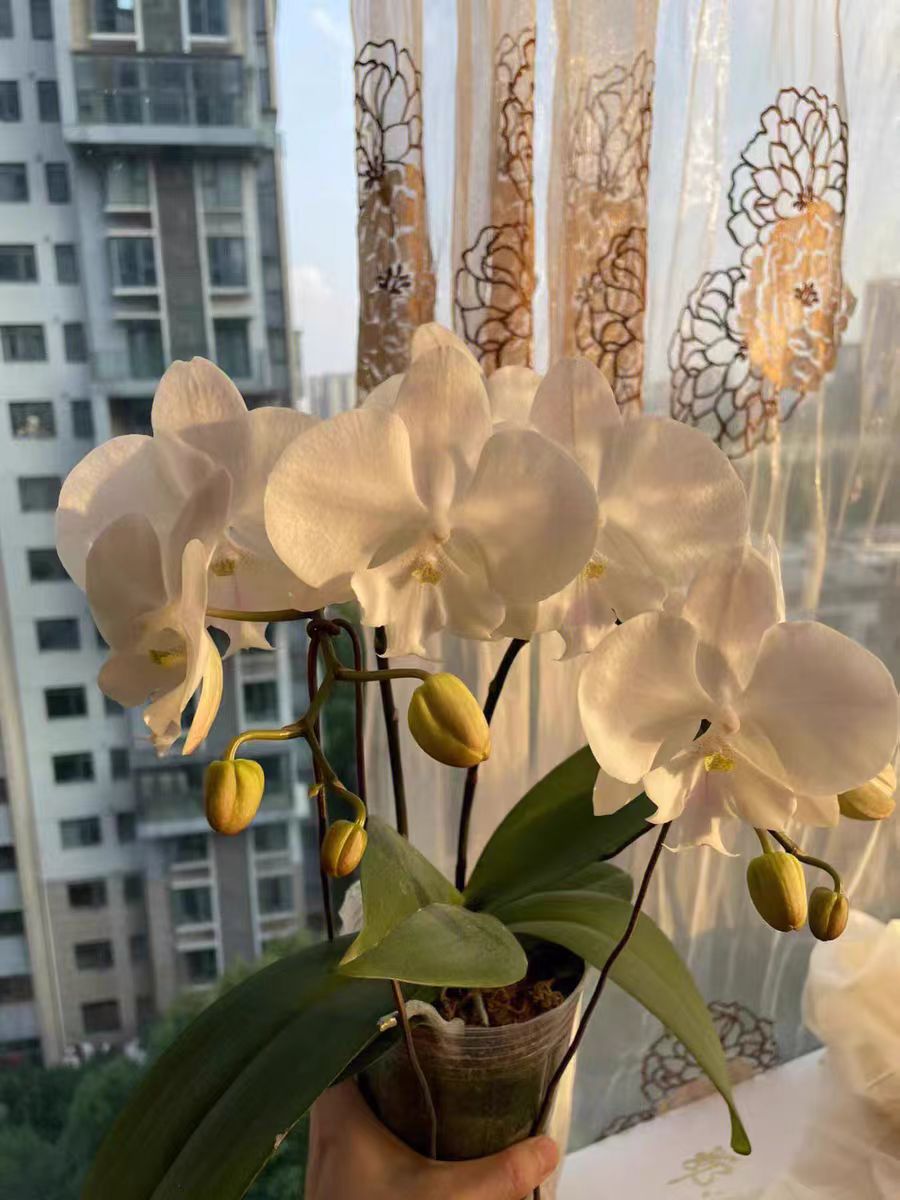The Phalaenopsis orchid has flowers that resemble butterflies with outstretched wings. Its petals are mostly broad - rounded, and the common flower colors include white, pink, purple, and multicolored varieties. The inflorescence is long and graceful, with high ornamental value. To keep this delicate Phalaenopsis orchid growing healthily, it is crucial to understand its water - absorption and nutrient - uptake mechanisms.
The unique root structure of the Phalaenopsis orchid is the key to its water absorption. Unlike most plants that take root in the soil, the Phalaenopsis orchid is an epiphytic plant, and its roots are exposed to the air. The surface of these roots is covered with a transparent tissue called the velamen. The velamen is composed of multiple layers of loose dead cells, with a large number of air gaps between the cells, like a highly efficient water - absorbing filter. When the air humidity is high or when watering, the velamen can quickly absorb water and transport it to the inside of the roots. The velamen can not only prevent excessive water loss from the roots but also absorb and store a large amount of water when water is abundant to cope with dry periods. In addition, the roots of the Phalaenopsis orchid also have a strong adsorption capacity, which can attach to the surfaces of tree trunks, rocks, and other objects to absorb water from the surrounding humid air.
In terms of nutrient absorption, the Phalaenopsis orchid also has a sophisticated strategy. Due to its special growth environment, the Phalaenopsis orchid cannot obtain rich nutrients from the soil like terrestrial plants. Therefore, it mainly relies on its own physiological mechanisms and organic substances in the external environment to meet its nutrient needs. On the one hand, the root hair cells on the surface of the Phalaenopsis orchid's roots are important sites for nutrient absorption. These root hair cells can actively absorb mineral ions dissolved in water, such as nitrogen, phosphorus, potassium, etc., providing the necessary nutrient elements for the growth of the plant. On the other hand, the Phalaenopsis orchid also forms a symbiotic relationship with some microorganisms. There are some beneficial fungi and bacteria around its roots. These microorganisms can decompose organic substances in the air and tiny particles attached to the plant surface, converting them into nutrient components that the Phalaenopsis orchid can absorb. At the same time, the Phalaenopsis orchid will also provide certain substances such as carbohydrates for these microorganisms, forming a mutually beneficial symbiotic relationship.
To meet the water - absorption and nutrient - uptake needs of the Phalaenopsis orchid, we can adopt some scientific methods in daily maintenance. When watering, the principle of "watering when the soil is dry and keeping it moist" should be followed to avoid waterlogging, which may lead to root rot. The need for watering can be judged by observing the color of the roots. When the roots change from green to gray - white, it indicates a lack of water, and it is appropriate to water at this time. In terms of fertilization, special orchid fertilizers should be selected and diluted in a certain proportion before watering or spraying. Increase the fertilization frequency appropriately during the growing season to provide sufficient nutrients for the plant; reduce fertilization during the dormant period to prevent damage to the plant caused by excessive fertilizer.
With its unique root structure and symbiotic relationship with microorganisms, the Phalaenopsis orchid has formed an efficient water - absorption and nutrient - uptake mechanism in its special growth environment. Understanding this knowledge not only allows us to have a deeper understanding of this beautiful flower but also helps us adopt scientific and reasonable measures in the process of maintenance.
What does the Phalaenopsis orchid rely on to absorb water?

Share with
Tagged in :




Leave a Reply